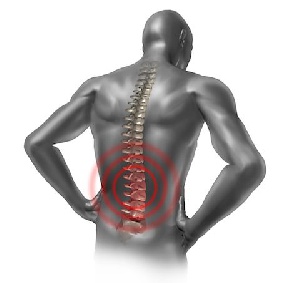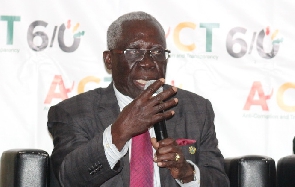 In clinical practice pain as the 5th vital sign has proven to be more complex to assess
In clinical practice pain as the 5th vital sign has proven to be more complex to assess
With the controversies going viral as to whether pain be considered a vital sign or not, does not take the argument from it that it is a vital component of health that needs a maximum attention and care. With other vital signs being obvious objective variables that can be measured on reading simple discrete figure, it leaves the room for arguments whether pain is considered a vital sign. Signs probably defined as observable changes in pattern are different from symptoms that are purely subjective.
Pain perception is varied and so therefore keeps the argument in contention as to whether it becomes a sign or symptom. Despite efforts to accurately measure pain with figures such as pain scores or studying behavior, the measure of pain still cannot be accurately measured. With the desire to effectively manage pain being a vital component of health, pain being a sign or symptom does not matter at all.
In clinical practice pain as the 5th vital sign has proven to be more complex to assess, evaluate and manage than originally anticipated. Patients and most clinicians view pain as purely a sensory experience hence management is necessarily limited to managing the sedation resulting in increased prescription of pain medications. Expanding pain education and training in evaluation, examination and management patient pain report is critical to remedying these problems. Pain scores used in measuring quality of pain does not accurately assess pain perception.
There should be a multi-dimensional approach to pain relinquishing the one-dimensional Pain numeric rating scale. Pain being one of the most common reasons for medical treatment if not seen as a vital sign should therefore be treated as one to elevate awareness of pain treatment among health professionals with the same urgency as we do to the other vital signs.
In my view, pain is both a sign and a symptom with the complexity of the issue and the impact on the quality of life for our patients. Nonetheless, this has misguided efforts by clinicians to eradicate all pain and an overreliance on opioids medications that have subsequently worked their way into society and caused addiction and over-dose deaths.
Is pain a rare disease? If the question is embraced, patients are put at the risk for host of pain related complications. Patients with migraines, peripheral neuropathy, complex regional pain syndrome, rheumatoid arthritis and the other pain types that affect and change the nervous system are therefore in danger when in an attempt to prevent overdose opioids deaths pain medications are withheld.
Assessment and treatment of underlying conditions that cause pain should always be the goal although it may not be the same in all case scenarios.
Amongst the function of the central nervous system targeting the pain module include pain sensation, pain transmission, pain modulation and pain interpretation, any abnormality occurring in any one of these processes causes hyperactive pain, indicating pain can become a disease itself. Understanding pain in this sense and the toll it takes on human life is paramount.
Prior to 2008, four vital signs were routinely monitored; temperature with the thermometer, pulse rate pressing the brachial artery against a bone, respiratory rate with observing one complete rise and fall of the chest and blood pressure with the sphyganometer and the stethoscope; all the above can accurately be measured without communicating with the patient. There was a gap to adequately state whether a patient was doing well on the ward or not since there was zero communication then.
Health professionals had been silent on the pain subject for long because if you don’t ask, you won’t know.
One can close the eye and list some adverse effects if pain is allowed to persist in the acute and chronic states. Pain has debilitating effects on almost all the body systems; with severe acute pain there is increased sympathetic activity increasing the myocardial oxygen demand leading to possible myocardial infarction. Patients with pain engage in splinted shallow breathing resulting to hypoxemia and hypercarbia increasing changes of lung collapse. Pneumonia follows suit.
There is reduced parasympathetic action on the gastro-intestinal tract impairing gastric motility. Most patients are constipated. Strains at stools delay healing and recovery. The musculoskeletal system is not spared as there is an increased catabolic demand resulting to muscle weakness and impaired rehabilitation.
Pain bores anxiety and fear leading to sleeplessness and helplessness accumulating to psychological stress. Drugs should be reserved as the last resort doing pain management. It should however not be withheld when it is needed.
Non-drug treatments such as the physical RICE therapy; rest, ice, compression, elevation coupled with physiotherapy, acupuncture and massage.
The most intriguing aspect is when you only have to reassure a patient and that may be all to let do to the pain. The psychological treatment should be embraced at the start of all pain treatment modules with giving vivid but brief explanation; reassurance and counseling where necessary.
Clinicians normally have an eye of prioritizing care during emergency situations and the norm is relegating those with pain to the very last with the why of caring for the most life threatening; presuming that one must be pretending. It is true pain is subjective but with the knowledge of what pain left untreated can do, one has to act fast when patients complain indicates signs of pain as though there is an actual tissue damage always assuming the possible worst scenario.
Clinicians will therefore want to achieve reasonable pain relief without unacceptable side effects with monitoring of pain scores, sedation scores and respiratory rates before, during and after administration of pain medications.
The communication skill deployed in pain assessment promotes doctor patient and nurse-patient interaction with excellent and better patient satisfaction.
Priority given to pain assessment helps individualizing patient care and offering better management to pain, promoting faster recovery and reducing length of hospital stay.












